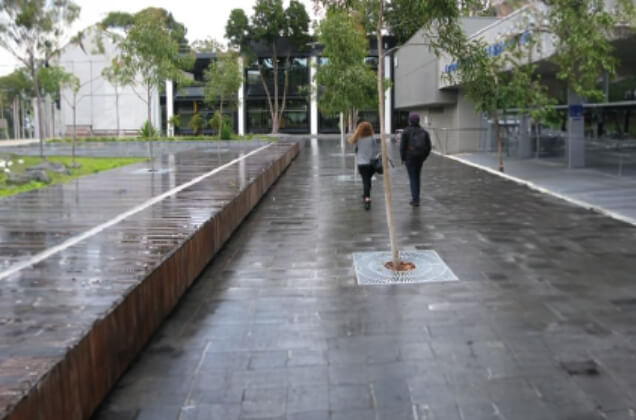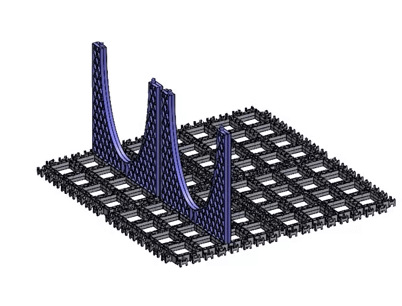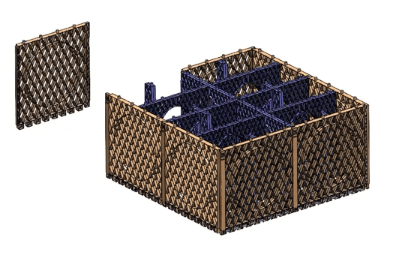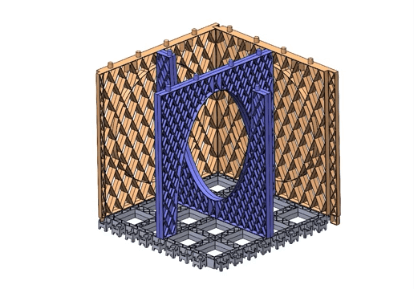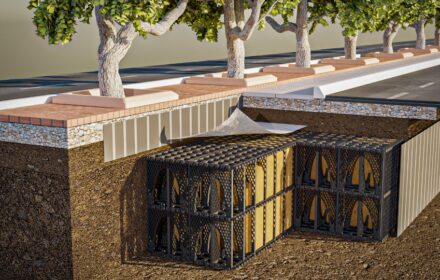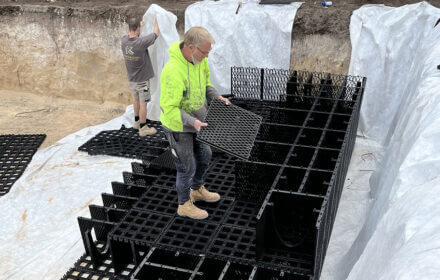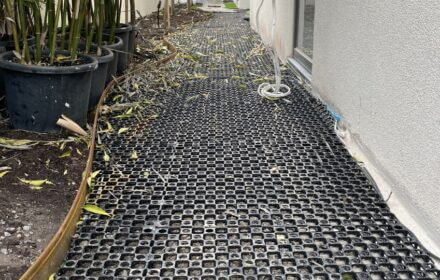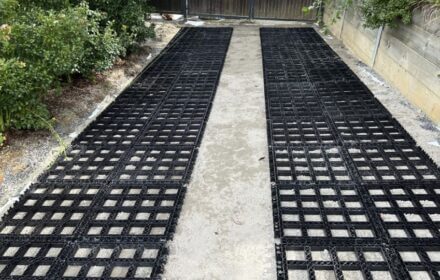Encourage the healthy growth of trees and plants in constricted areas using iglube’s structural soil cell systems. iglube modules replace traditional structural soil of 70mm aggregate (i.e. rail ballast) as the structure with small amounts of organic soil added for tree growth.
The modules are filled with soil and the open internal structure permits the free spread of growing tree roots. This goes on to provide structural support, replacing the aggregate and allowing full use of organic soils to improve growth.
If you’re looking for a structural soil cell system that allows the plants to grow in well-draining soil while preventing stagnant water and root rot, contact us today.
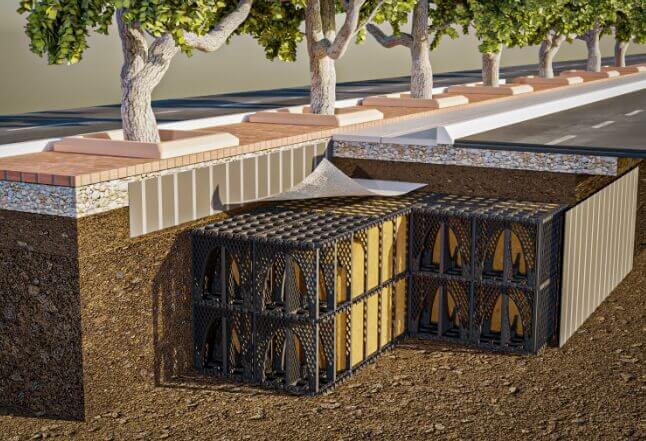
-
Geotextile
-


-
iglube Modules
-


-
Soil
-


-
Root Barrier
-


| Size Metric |
(W) 540Mm X (L) 540Mm X (H) 540Mm |
| Size Imperial |
157L ( 5.54 Cu.Ft) |
| Gross Volume |
157L ( 5.54 Cu.Ft) |
| Storage Capacity |
150L ( 5.29 Cu.Ft) |
| Modules Per Cm (35.31 Cu Ft) |
6.67 |
| Ultimate Crush Strength |
> 24 Tonne/Sqm (34Psi) Unconfined |
| Material |
85% Polypropylene, 15% Propriety Mix |
| Proprietary Materials |
Colour Black |
| Chemical And Biological Resistance |
Unaffected By Moulds And Algae, Soil-Borne Chemicals, Bacteria And Bitumen |
| Service Temperature |
-30℃ To 120℃ (-22℉ To 248℉) |
| Estimated Material Life Expectancy |
100 Years+ (Note: Assuming Below Ground Installations And No Exposure To U.V. Light) |
Structural Soil Cell System in Urban Landscaping
Maintaining green spaces can pose significant challenges due to compact soil and limited planting areas. iglube’s structural soil cell systems offer an innovative solution that enhances urban landscaping by providing an underground framework for healthy tree growth and efficient stormwater management.
These soil cell systems allow room for roots to grow without disturbing the urban infrastructure. Made with highly durable materials, these cells facilitate the balanced distribution of air, water, and nutrients, promoting healthier trees and plants that can thrive in city conditions. Investing in this system means investing in the long-term vitality of urban green spaces.
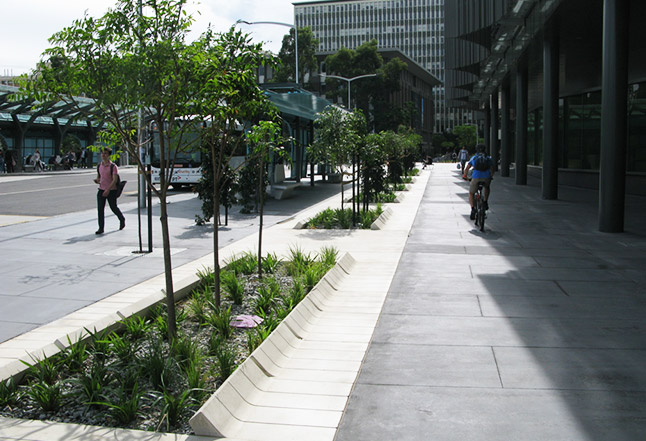
Structural Soil Cell System in Your City – How To Implement
Implementing a structural soil cell system requires thoughtful planning and careful execution. Here’s a simple guide for city planners and contractors in cities like Melbourne, Sydney, and Brisbane :
-
Assessment: Evaluate the specific needs of the area, considering factors such as pedestrian traffic, existing infrastructure, and desired vegetation.
-
Design: Work with specialised professionals to create a customised plan that integrates seamlessly with your urban landscape.
-
Installation: Install the soil cell systems, ensuring compliance with all local guidelines and regulations.
-
Maintenance: Although these systems are low-maintenance, regular check-ups help ensure their longevity and effectiveness.
Call 1300 069 394 for more information or browse our website to discover how these systems can transform your city landscape.
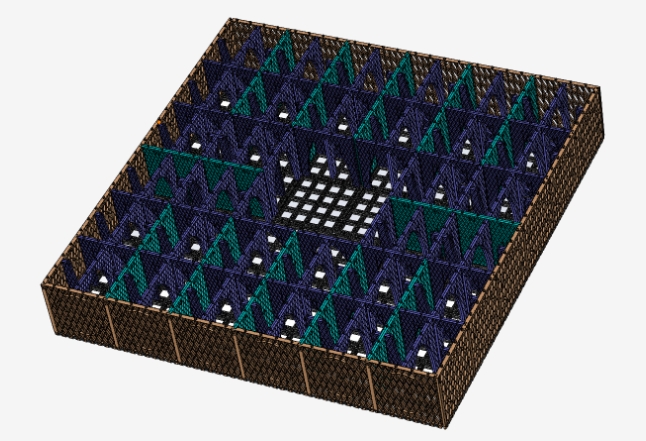
| Module (units) | Tank Volume(L) | Water Storage Volume (litres) | Water Storage Volume (gal) | Number of Plates Standard Module (B/A/S) | Tank Weight(kg) | Width(mm) | Length(mm) | Height (mm) |
|---|---|---|---|---|---|---|---|---|
| Single (1) |
157 |
150 |
39.60 |
2/2/4 |
2.73 |
540 |
540 |
540 |
| Double (2) |
306 |
290 |
76.60 |
3/4/8 |
4.28 |
540 |
540 |
1050 |
| Triple (3) |
455 |
432 |
114.12 |
4/6/12 |
5.84 |
540 |
540 |
1560 |
| Quad (4) |
603 |
573 |
151.37 |
5/8/16 |
7.39 |
540 |
540 |
2580 |
| Penta (5) |
752 |
715 |
188.88 |
6/10/20 |
8.95 |
540 |
540 |
2580 |

Our technical documentation and drawings for iglube provide valuable information and clear schematics. Contact us to learn more.
Click the buttons below to download the relevant PDFs


This is dummy text, we use it at Supple during web designing in case we don't have content for new NON SEO pages and it is changed during
Frequently Asked Questions – Structural Soil Cell Systems
What are structural soil cell systems and how do they benefit urban areas?
Structural soil cell systems are engineered frameworks that provide space for tree roots to grow without interfering with urban infrastructure. They support healthy tree growth, manage stormwater effectively by allowing infiltration into the ground, and improve the aesthetic and ecological environment of city landscapes. These systems are particularly beneficial in dense cities where green space is limited.
Can structural soil cell systems be installed in existing pavements in cities?
Yes, one of the major advantages of structural soil cell systems is their ability to integrate seamlessly with existing infrastructure. They are constructed to bear the weight of overlying pavements, such as sidewalks or parking lots, making them suitable for retrofitting under existing urban environments without significant disruptions.
How do structural soil cell systems enhance stormwater management?
These systems help manage stormwater runoff by capturing rainwater and allowing it to permeate into the ground, reducing the burden on city drainage systems during heavy rainfall periods. This not only helps in preventing floods but also contributes to purifying water before it reaches local waterways, enhancing the overall water quality and supporting sustainable urban development.
What makes structural soil cell systems a sustainable option for urban landscaping?
Structural soil cell systems promote sustainability by reducing reliance on non-renewable resources. They facilitate the use of recycled materials in their construction and help maintain urban greenery, which plays a vital role in reducing the urban heat island effect. By enabling strong and healthy tree growth, they also contribute to better air quality and enhance biodiversity in urban settings.
What steps should be taken to implement a structural soil cell system in my city?
Implementation involves a few critical steps. Assessment, design, installation, and maintenance. These steps help city planners and construction teams introduce structural soil cell systems effectively, enhancing the urban landscape while addressing environmental sustainability challenges.
